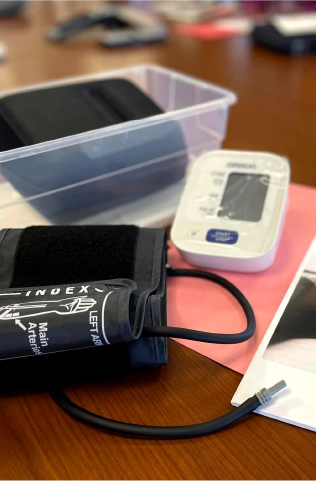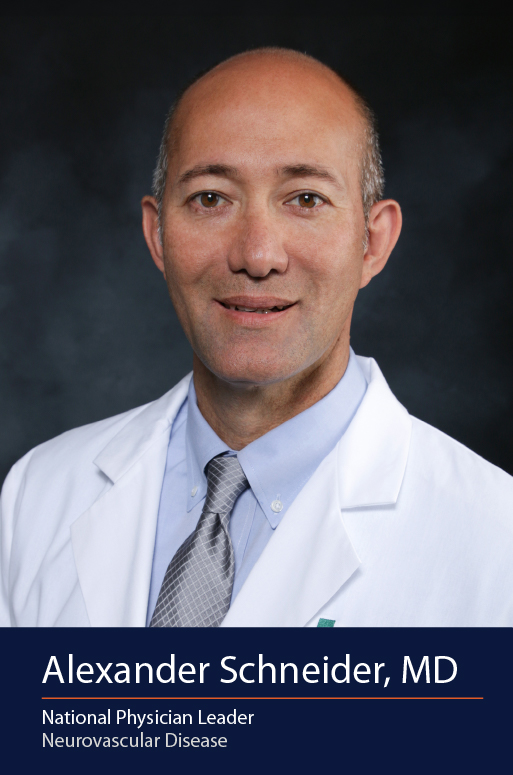The industry-leading Getting to the
Heart of Stroke™ initiative is a partnership between HCA Healthcare, the
HCA Healthcare Foundation and the American Heart Association.



In its first year, the Getting to the Heart of Stroke™ initiative has achieved national reach through a learning collaborative with 10 facilities focused on quality improvement. It has also delivered the first installment of six professional education podcasts and webinar resources for clinical and medical professionals, and it has launched local health impact initiatives with more than 38 nonprofit partners across 15 HCA Healthcare communities.
“The work that we are doing with Getting to the Heart of Stroke™ and AHA is a natural next step in our efforts to provide the best stroke care in the world,” says Alexander Schneider, MD, HCA Healthcare’s National Physician Leader of Neurovascular Disease. “To date, we’ve achieved best-in-class treatment times for the administration of clot-busting therapies to minimize the impact of a stroke once it has occurred.”
“We are now working in close collaboration with cardiology to reduce the incidence of stroke by identifying and sharing best practices and data to pinpoint the cause of the stroke to enable targeted preventive measures,” he says.
The multipronged program aims to reduce stroke related death and disability by focusing on four major pillars “which span from community activities in patient education and awareness to provider and physician education and collaboration between neurology and cardiology teams, which will ensure we both diagnose cardiac causes of stroke and achieve better outcomes,” says Steven Manoukian, MD, FAHA, FACC, FSCAI, <br>HCA Healthcare’s senior vice president of Service Lines.
Those pillars include:
- Quality Improvement: Optimize identification of stroke causes by strengthening neurology and cardiology care collaboration while addressing health equity, diversity and inclusion disparities.
- National Professional Education: Develop medical education activities that improve identification of stroke cause, reduce secondary strokes and enhance access to care for all.
- National Consumer Education: Empower consumers to know and better manage risk factors and advocate for further evaluation.
- Community Integration: Address health disparities through community health interventions focused on blood pressure, nutrition security and maternal health, partnering with more than 40 local health centers and community organizations.
According to Alison L. Bailey, MD, FACC, FASPC, HCA Healthcare’s national physician leader of cardiac disease, a crucial factor in a patient-centered approach to stroke care is implementing strategies to improve communication channels and standardize reporting between neurology and cardiology.
“First, we need to speak the same language when describing the type of stroke a patient has experienced,” says Dr. Bailey. “Every decision for treatment and prevention of additional strokes is based on determining the etiology of the stroke. Making sure the discharge summary accurately lists the type of stroke a patient experienced is an essential first step in improving care.”
However, given the inequalities in cardiac care across a vast medical landscape, Dr. Bailey notes that no single approach will work everywhere. Regular meetings between cardiology and neurology in communities will help determine the best strategies, she says.
This work requires a significant financial commitment, which highlights the role of the HCA Healthcare Foundation.
We’re confident that the relationship between a best in-class organization like the American Heart Association and another which encompasses HCA Healthcare and the Foundation will achieve its goals in improving prevention, diagnosis, treatment and outcomes.— Steven Manoukian, MD, FAHA, FACC, FSCAI, HCA Healthcare’s senior vice president of Service Lines
“When we designed this partnership, we realized both organizations wanted to advance our shared commitment to health equity,” says Joanne Pulles, president of the HCA Healthcare Foundation and HCA Healthcare’s vice president of Community Engagement. “Through this collaboration, we not only wanted to make a financial investment — we really wanted to amplify that investment through intentional leader-to-leader connections by involving our physicians and division leadership.”
The initiative is expected to serve as a blueprint or best practice example for other healthcare enterprises, says Dr. Manoukian.
“We’re confident that the relationship between a best in-class organization like the American Heart Association and another which encompasses <br>HCA Healthcare and the Foundation will achieve its goals in improving prevention, diagnosis, treatment and outcomes,” he says.
HCA Healthcare CEO Sam Hazen and American Heart Association CEO Nancy Brown spoke last fall about the Getting to the Heart of Stroke™ initiative. Here are excerpts from their conversation with HCA Healthcare senior vice president Steven Manoukian, MD, FAHA, FACC, FSCAI.
Nancy Brown: This new partnership is a really spectacular way to showcase what is best about HCA Healthcare and what is best about the American Heart Association. Our shared commitment to health equity, our commitment to excellence in clinical care, our commitment to our communities and how we bring that all together will really be showcased in our new initiative.
Sam Hazen: Our facilities — a lot of them — are in the communities where the incidence of stroke is very high. And we felt that, with the programs and research that we’re doing and some of the research and programs that you all have, we’re a perfect match to come together and really connect the dots on cardiac care and stroke care.
So Getting to the Heart of Stroke is a very exciting agenda, and one that I think is going to be impactful in many respects as we think about the education, the training, and the awareness around all of that.
Nancy Brown: When we think about brain health broadly, what we always say at the American Heart Association is, “What’s good for the heart is good for the brain.” So many of the risk factors for having a heart attack are the same risk factors for having a stroke. And the connection of cardiovascular events in stoke in the clinical setting is really novel, believe it or not. We are the American Heart Association and the American Stroke Association. We bring them together. But it really is through our partnership that we’ll be able to demonstrate how the clinical teams working to treat cardiovascular patients and stroke patients can better integrate.
Dr. Manoukian: Stroke is one of the major causes of death and disability in the U.S., so really preventing the first stroke is key. Understanding not only those risk factors for stroke — like hypertension and diabetes, being overweight, inactivity, and smoking — but also understanding that treating those conditions can help dramatically reduce your risk of a first stroke. There was also a need for better collaboration between neurologists and cardiologists and those care teams to not only prevent first strokes, but really get deep into understanding what the cause of a stroke is. It’s our hope that this will form a bit of a playbook or a best-practice example of how a great organization like the American Heart Association and another one like HCA Healthcare and the HCA Healthcare Foundation can work closely together, perhaps even bringing in other stakeholders and other key partners that can make us even more powerful and multiply the benefits of what we see today for the healthcare of tomorrow.
Nancy Brown: What’s most exciting about the initiative is how patients and communities will benefit … and to demonstrate this clinic-to-community connection is a really important aspect of our partnership.


